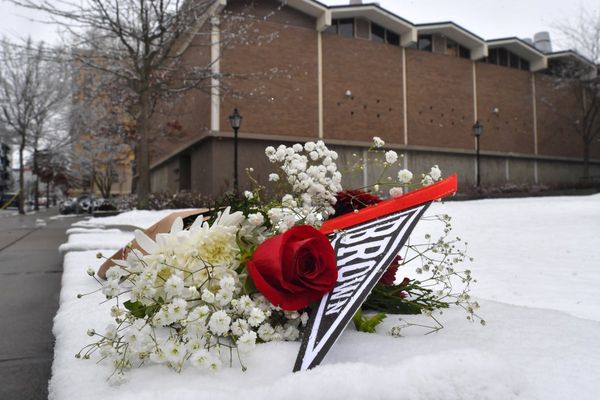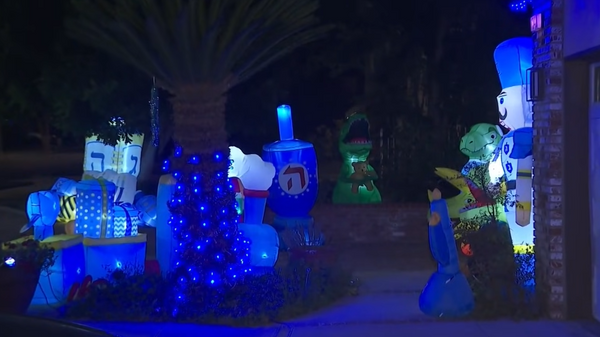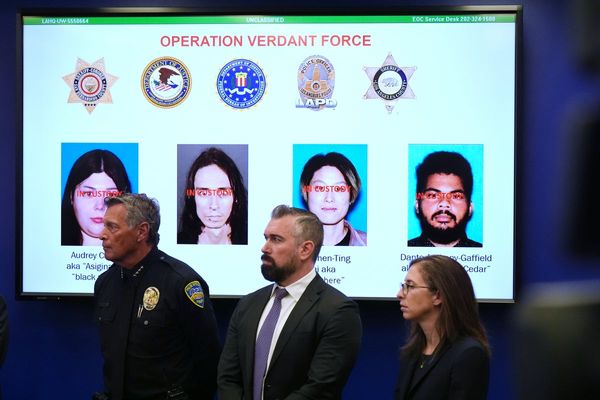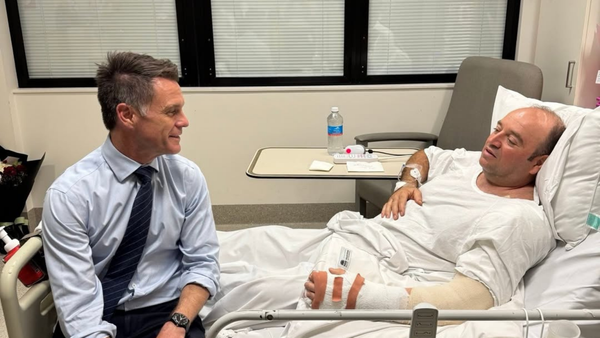The wooden walls of the village hall in Charles Town, Jamaica, are adorned with a procession of shadowy figures: a tribute to the resistance struggle of the Maroons – African people who escaped enslavement and created their own free communities in remote and hilly parts of the island.
Set in the lush embrace of majestic Jamaican hills and mountains, the idyllic settlement is quiet, but for the crowing of unseen roosters. Maroon spiritual leader Gloria Simms, affectionately called Mama G, warmly greets neighbours as she walks towards the hall – hair wrapped, her colourful dress moving with the gentle breeze.
Simms, who was honoured with the chieftain title of Gaa’mang in Suriname, exudes a regal air as she sits among the rows of benches to tell the story of her Maroon ancestors.
It began on the plantations where people from across west Africa were taken in shackles after being kidnapped from their homes. Some had stood in markets, while plantation owners examined their bodies to determine their value. Some had felt the searing pain of the iron brand after purchase. And on the plantations they had witnessed and experienced unspeakable horrors that led them to conclude it was better to die seeking liberty than to live as a slave.
Centuries later, five main Maroon communities in Jamaica are still thriving: the Accompong, Charles Town, Moore Town, Scott’s Hall and Flagstaff Maroons. Each has at least a few hundred residents who follow the customs of their ancestors, such as forms of governance, medicinal approaches, music, and cleansing and religious rituals. Similar communities survive in other countries, including Suriname, Brazil and Colombia.
Maroon councils are said to be so effective in managing disputes that crime in their settlements is lower than in other parts of Jamaica. They also typically do not pay land tax, citing the terms of peace treaties signed with the British government in the late 1730s.
Mama G is among a group of Maroons who have dedicated their lives to preserving and promoting Maroon culture – and to pursuing justice for past wrongs.
Mama G describes Jamaica’s 1838 proclamation of the abolition of slavery as “empty words on blank paper” that was more beneficial to “oppressors than to the oppressed”, and that ensured systemic economic deprivation for the descendants of the enslaved.
For her, true emancipation requires a restoration of what was taken from African people and the future that was snatched away from their displaced descendants.
“When Europeans first came to Africa they saw us in all our glory. We walked on gold … Our crowns … [were] created from the raw material we had. So, they took many examples from us to build their kingdoms and destroyed ours,” she says.
Europeans, she adds, weren’t just looking for free labour, they were intent on taking over. “We were identified as ‘ugly’ and ‘backwards’ because of our physical features such as our dark skin, big nose and thick, broad lips. They wanted to humiliate us, a chosen people, to bring us down because of jealousy, envy and greed.
“Restoration is reparation – repairing the damage done by the transatlantic slave trade,” she says. Mama G is concerned that some view slavery, and the enduring impacts it has created such as systemic racism and discrimination, “like it’s nothing, like you can just throw it under the carpet, and we must be strong and be a part of society, even though they’ve blocked us from everything … and tied our hands.”
Vivian Crawford, a Maroon who sits on Jamaica’s National Council on Reparations, said that the plight of enslaved and displaced Africans and the impact on their descendants are still not given equal weight to other acts of genocide throughout history.
He argued that the Maroons’ revolt and self-emancipation – and their ability to match armed colonisers and form structured communities, despite coming from different nations in Africa with different customs and languages – was a testament to their ingenuity and resilience.
“Our ancestors did not allow themselves to be subjected to other people. And my role is to take on that baton that they have handed to me and not to drop it. I am to carry on that track to the winning post. The journey is not complete,” he said.
In recent times, there has been a growing global momentum for reparations for slavery, and repatriation of valuable objects taken by the British, especially across the Caribbean and Africa. In July, Caribbean leaders backed a petition to King Charles, asking the monarch to use his authority to request legal advice from the London-based privy council – the final court of appeal for UK overseas territories and some Commonwealth countries – on whether the forced transport of Africans to Jamaica was lawful, if it constituted a crime against humanity, and whether Britain was under obligation to provide reparations to Jamaica for slavery and its enduring consequences.
Mama G sees such calls as divine intervention. “They talk about upholding human rights, but when it comes to them dealing with us, it’s like there’s no justice. So this crying that we have been making for so long – as a people who have been through one of the worst criminal [acts] against humanity – it gets stronger because our ancestors and the almighty God are intervening for justice to be done.”
Mama G paused to greet drummer and youth leader Oniel Green, 42, and Samantha Douglas, 18, who had just arrived at the hall and are part of the next generation who say they are working to keep the Maroon traditions alive.
Sharing the wisdom and culture of the Maroons across Jamaica is key to the Maroon goals and supports crime reduction, she says. “Without culture, there is a loss of identity and a disconnection from their roots. And as our Honourable Marcus Garvey said, ‘a people without the knowledge of their past history, origin and culture, is like a tree without roots’, which will surely fall.”







